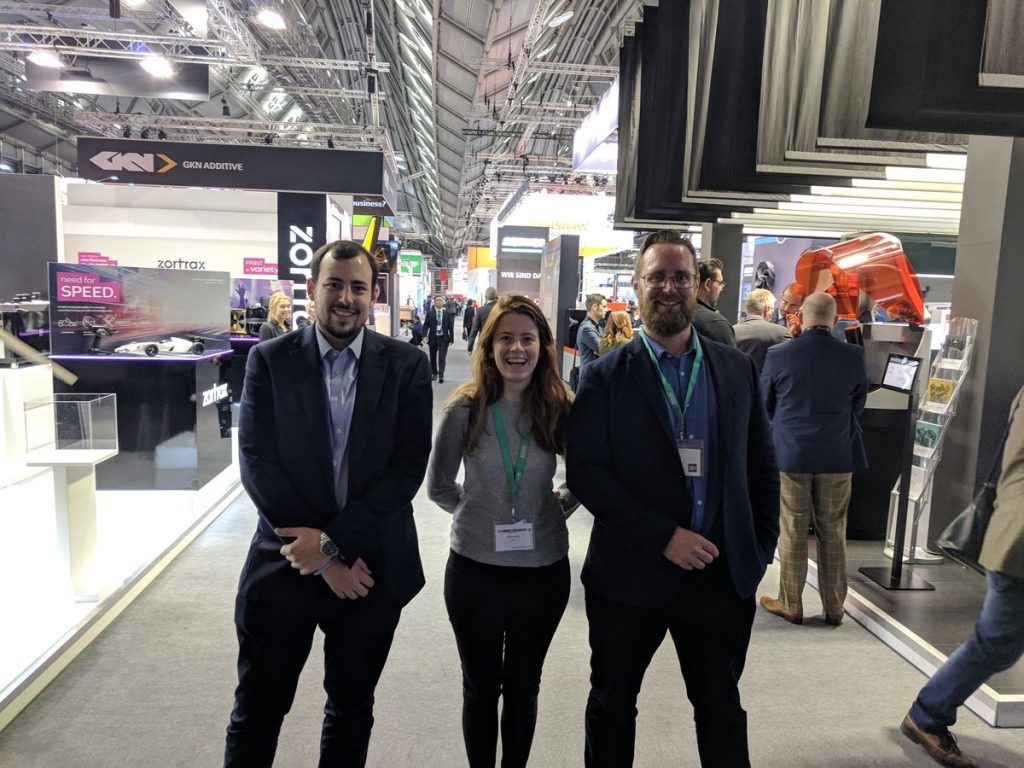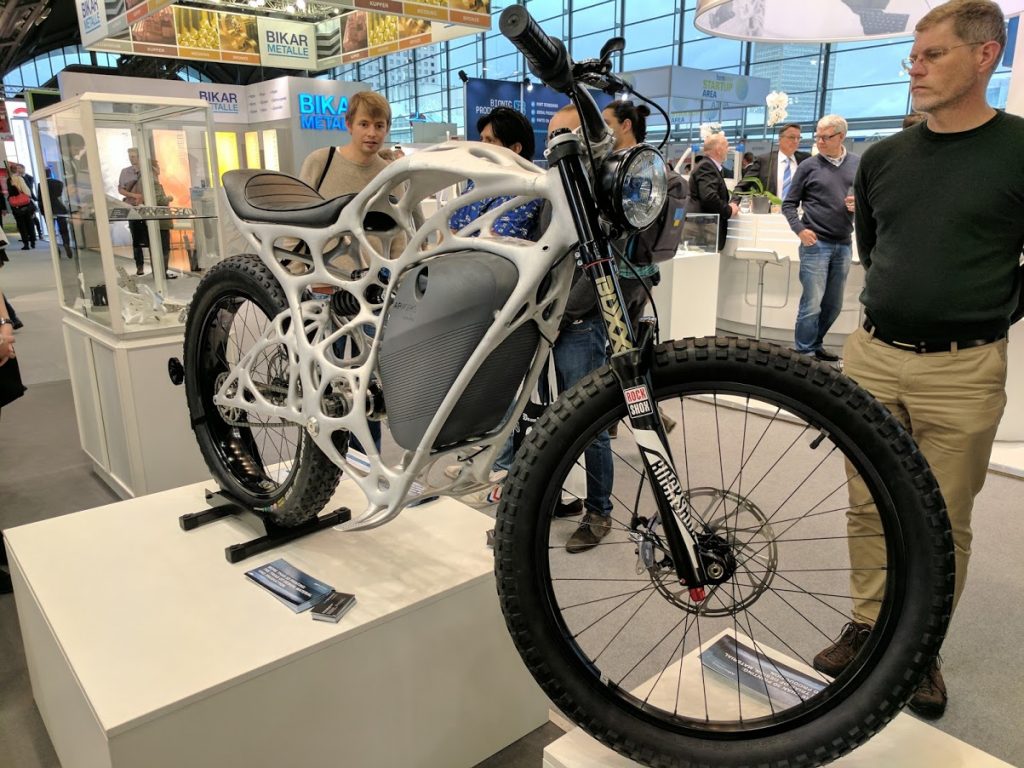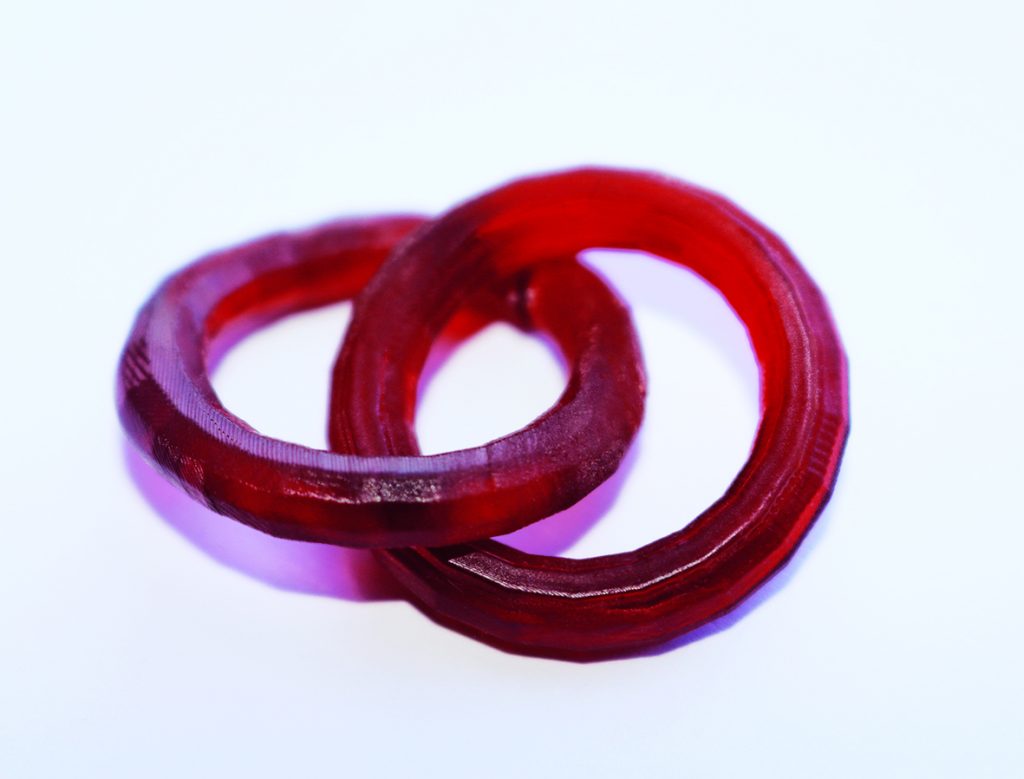In November, the word on everyone’s lips was formnext. A number of companies leaked information about upcoming releases/demos, and 3D Printing Industry reporters were out in force at Frankfurt’s largest 3D printing fair to date, with 4 of the team spending the week at the show.

To start Sascha F. Wenzler, Vice president of formnext at Mesago Messe, gave us a preview of what to expect from 2017’s show.
3D Printing Industry Editor-in-chief Michael Petch gave his review of the exhibition on day one, and Dayton Horvath followed up with a detailed analysis of the trends across the additive manufacturing sector.
A product of its partnership with Concept Laser, GE Additive beta launched the ATLAS 3D printer, with the largest metal build volume to date (1.1 x 1.1 x 0.3m). EOS unveiled its latest polymer system, the P500, as previewed in my visit to the Krailling HQ earlier in the year. Portugal’s ADIRA presented the latest stage of its forthcoming additive manufacturing system. And we also got to take a close up look at the quad-laser RenAM 500Q.
Beyond formnext
In November month we also visited 3D Systems in Denver to cover the launch of new products including the FabPro 1000 3D printer.
And, moving from 2D printing into 3D printing, Kodak soft-launched its first ever professional desktop 3D printer, the Portrait, for an RRP of $2,799.
Fierce competition
Competition within the 3D printing industry continued to heat up throughout November in a number of lucrative deals. Notably, in a Series C funding round, Markforged raised $30 million of investment including money from Microsoft, Porsche and Siemens.
APWORKS’ scandium/aluminum Scalmalloy material earned a new developer in TOYAL, a producer of aluminum pigments and coatings for the automotive industry.

Eindhoven’s Additive Industries, as visited by us earlier in the year, announced a partnership with construction engineering company SMS Group to help expand market reach for metal additive in end-use production.
Andy Kalambi became the new CEO of Rize Inc.
And, adding to a trend within 3D printing, the Fraunhofer Institute for Laser Technology (ILT) announced the Future Additive Manufacturing (futureAM) project uniting 5 of the society’s laser research bodies to reduce the cost of metal 3D printing. ILT also preceded this announcement with information of its free-floating TwoCure SLA process.

Outstanding research efforts
3D printing powered research continued to thrive, and TU Delft’s self-folding tulip became one of the most talked-about articles of the moment.
We covered the German Federal Institute for Materials Research and Testing (BAM) and TU Clausthal’s zero-gravity PBF project.
In another busy month our Editor-in-chief visited Singapore’s National Additive Manufacturing Innovation Cluster (NAMIC) summit where we saw first-hand how the technology is contributing to the “rapidly evolving landscape of digital industrialisation.” This includes support of a strategy by Sembcorp Marine to revolutionize offshore & marine applications.
Nominate the best of 2017 in the second annual 3D Printing Industry Awards now.
Don’t miss out on another story – subscribe to the 3D Printing Industry newsletter, follow us on Twitter, and like us on Facebook.
Featured image shows a graphical representation of TU Delft’s self folding, 4D printed, tulip. Image via TU Delft


